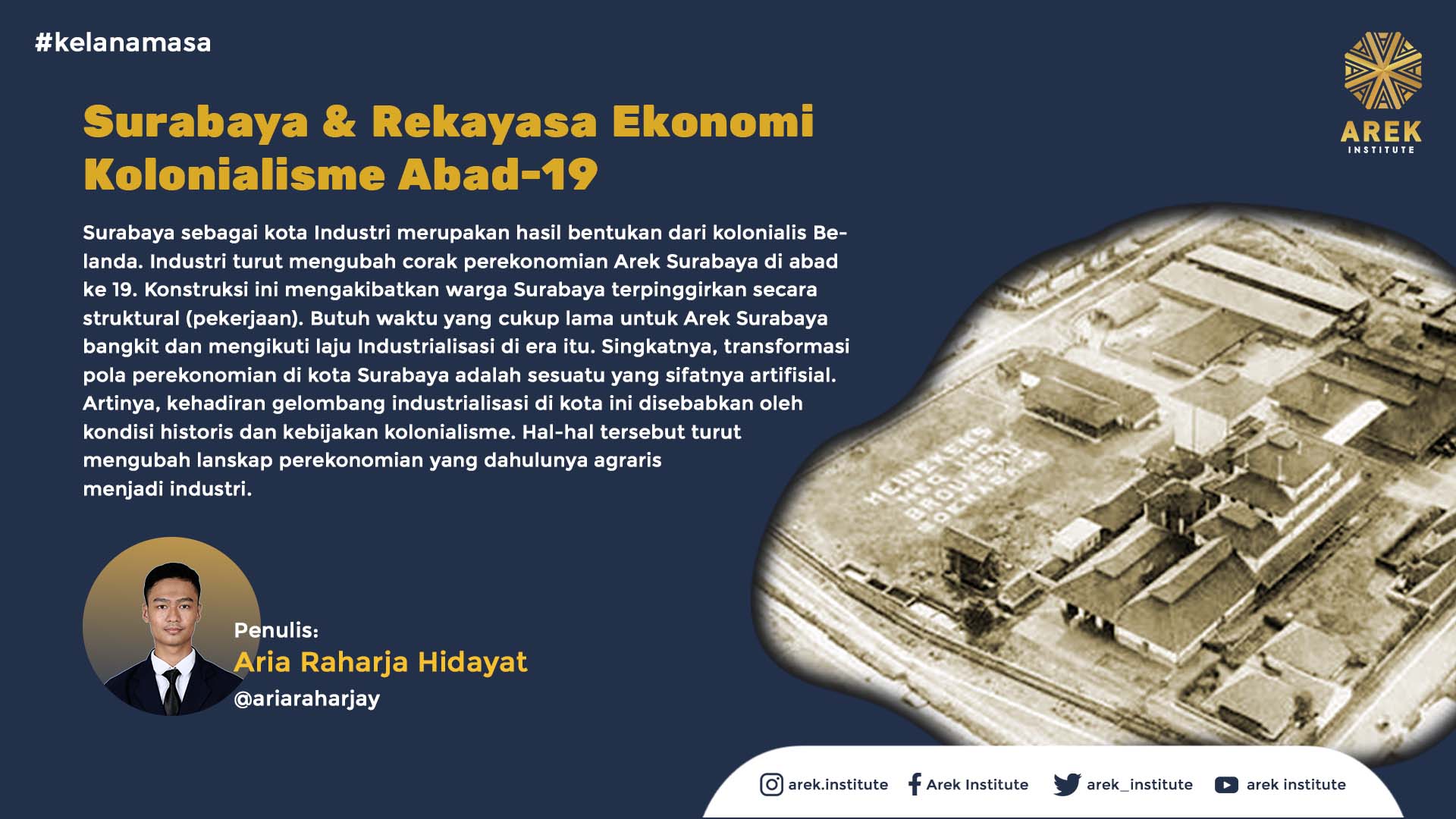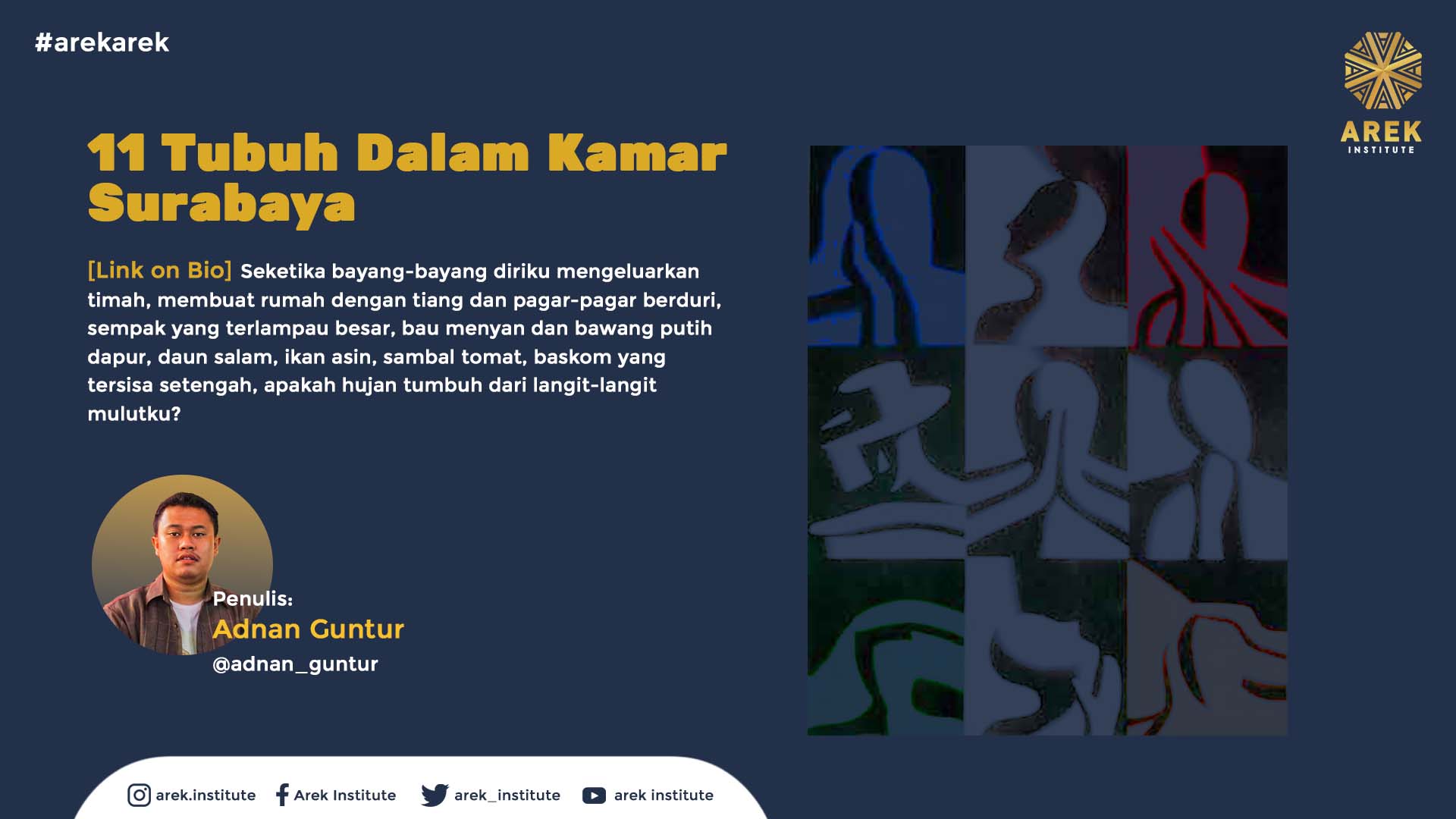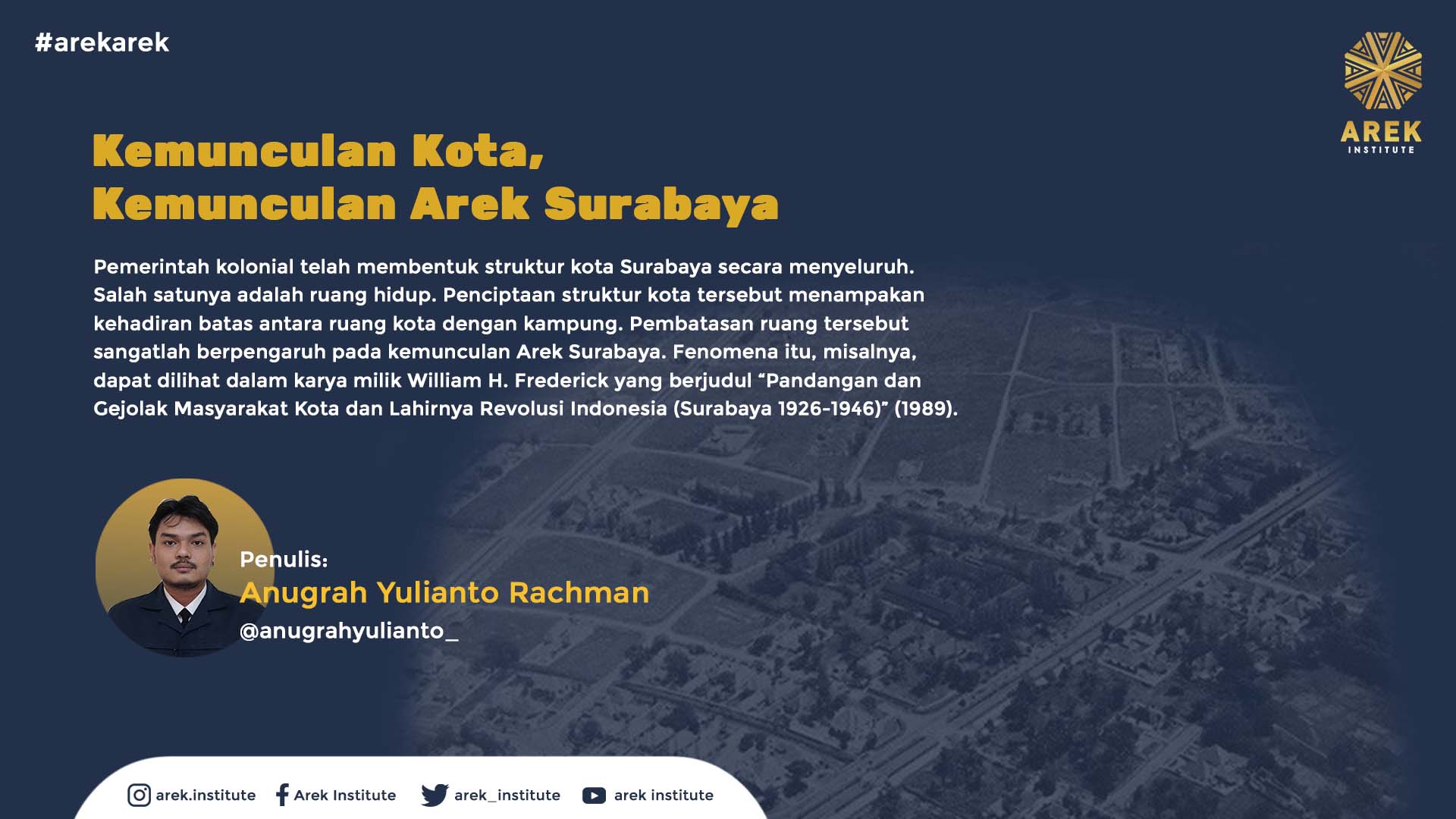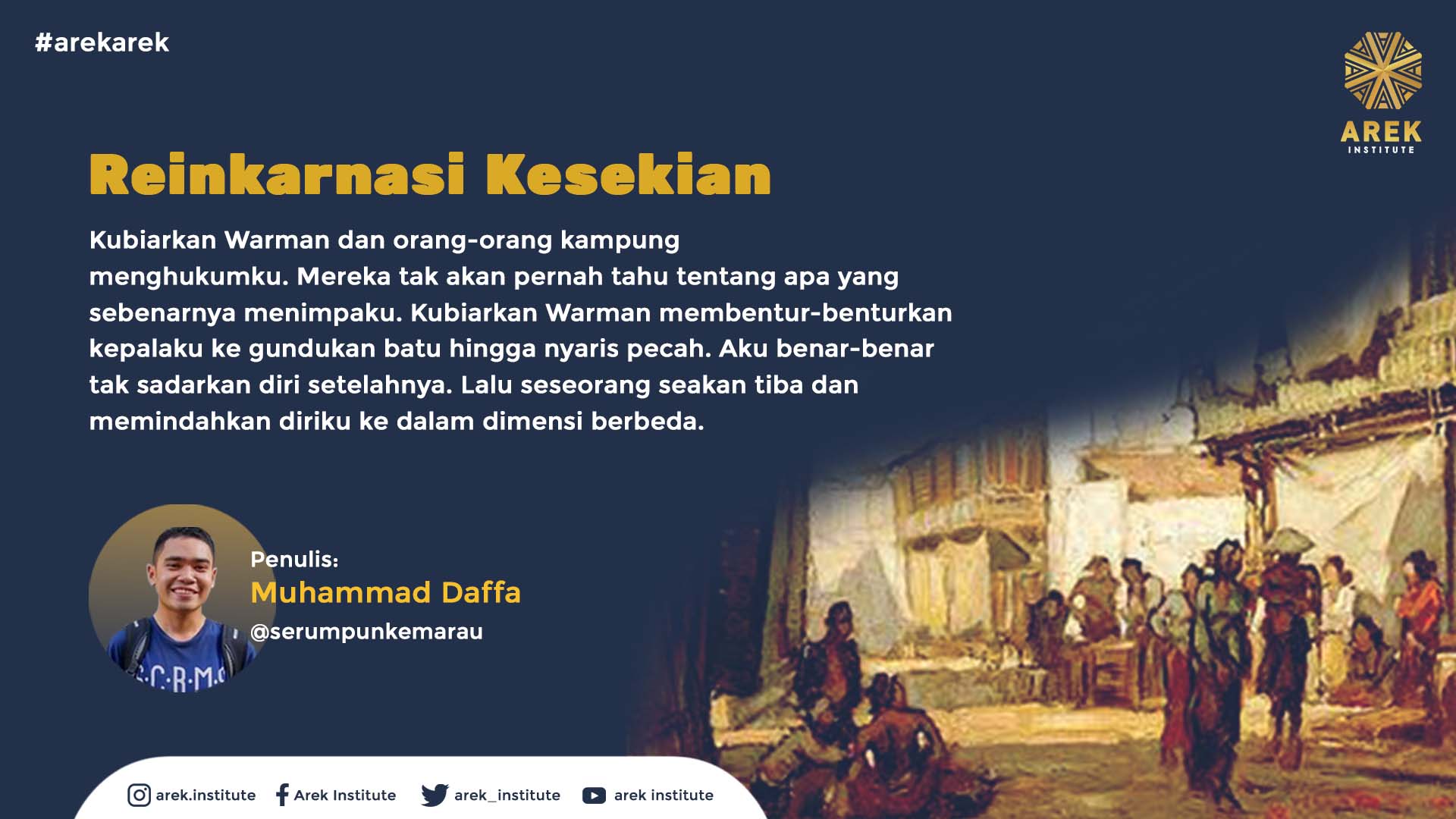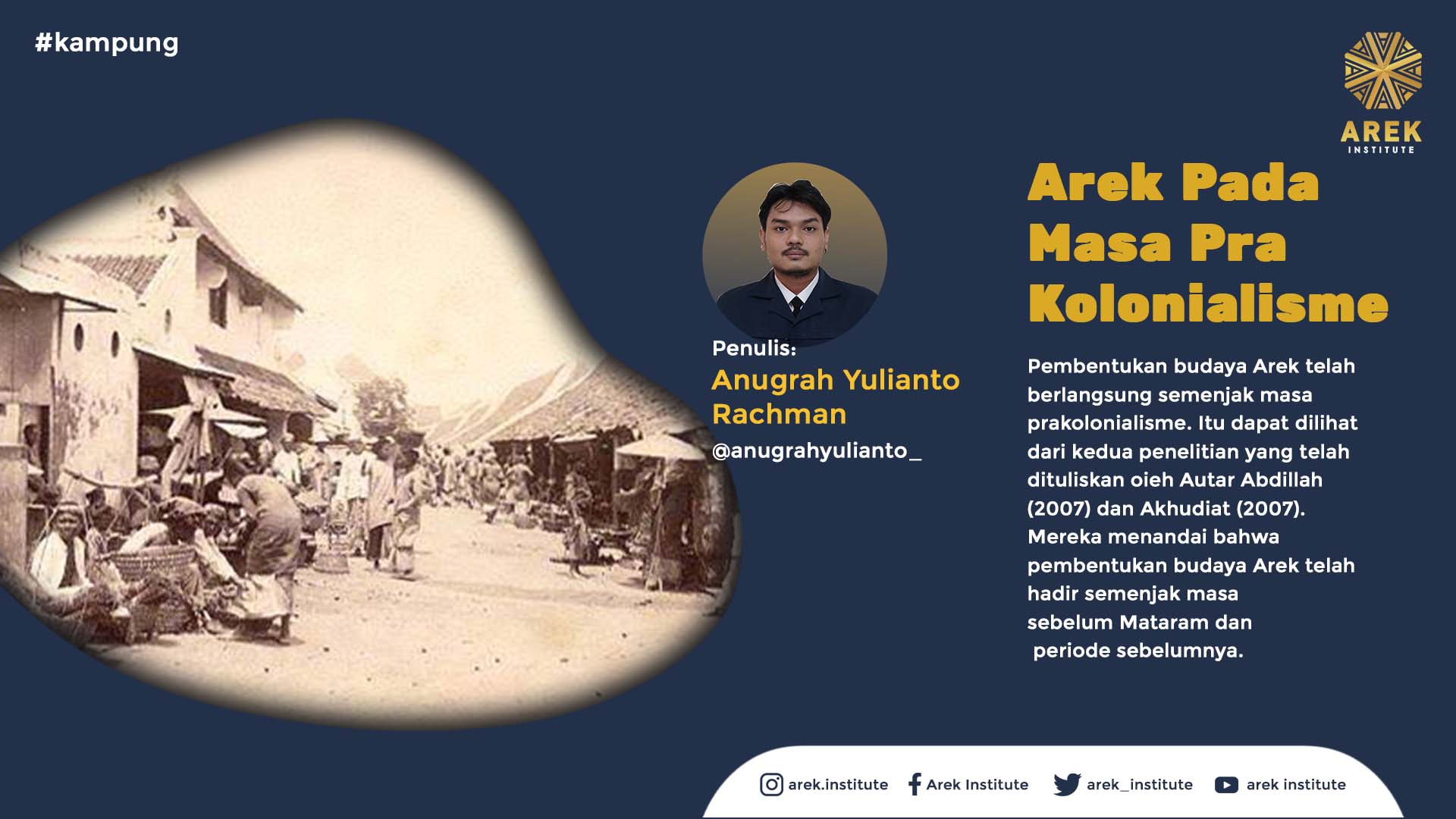
Arek on The Pre-Colonial Era

Anugrah Yulianto Rachman–Nugi. Peneliti Arek Institute.
Indonesian researchers and writers have always marked the pre-colonial era as the initial period of the formation of Arek culture. This can be observed through two writings that attempt to trace the formation of this culture during that episode. The first article is by Autar Abdillah titled “Hybridity of the Javanese Arek Cultural Meeting” (2007) and the second work by Akhudiat titled “Arek Culture” in his book “Entering and Exiting Villages” (2008).
In Autar’s article, he aims to prove that Arek values have emerged since the period 1037-1468. This is evidenced by natural phenomena that caused geographical landscape changes in the Arek culture distribution area. Because, around that period, Mount Kelud erupted as many as 22 times. These eruptions had an impact on the Arek culture area, Surabaya.
The eruptions caused Surabaya at that time to be covered with cold lava from the eruption. Autar presents a map of Surabaya once drawn by Faber, showing that originally, Surabaya was an area formed of island clusters or deltas. Consequently, the eruption caused the deltas, separated by rivers, to be covered and become a unified area. This landscape change also influenced the formation of the Arek Surabaya character.
The character, created from this geographical landscape, is the characteristic of the Arek community known to be tough, loud, and brave. This character emerged from the island or delta formation of this subculture area. Because of the geographical condition of their environment, separated by rivers, the Arek community was accustomed to speaking loudly and boldly. This also formed the character or characteristics of Arek culture.
According to him, Arek culture’s character is not only caused by natural phenomena but also influenced by the familiar term Arek or Rek. He attempts to trace this based on the term Arek derived from Old Javanese language. For him, the term emerged from the root word Ari, which means younger brother, younger sister, or even someone who is not a relative.
Moreover, the term Ari is also connected to the Kawi noun meaning adhi, aryi, ari-ari, aruuman. Apparently, the term Ari is also preserved in Kawi language. Not stopping there, he also observes the change in the term Arek that occurred in this term. In Old Javanese, Ari-Ika or arika changed its meaning to Arek. However, it has the same meaning, which is sibling (ari-ari riko).
This means, the greeting pattern in the Arek subculture already contains the meaning of brotherhood. This is further strengthened by the spirit of togetherness in this subculture. For Autar, this value is shown when someone comes to visit, they will be welcomed as if at their own home. This value is not only contained in the familiar greeting Arek, but it is also preserved in other forms, such as Sinoman Suroboyo.
On the other hand, the tracing done by Autar has also received a response from Akhudiat. Akhudiat attempts to trace the formation process of Arek culture before the conquest by Mataram. Because Surabaya, as the central locus of Arek culture distribution, was once influenced by the presence of Raden Rahmat (Sunan Ampel). This is shown from the political relations within Sunan Ampel’s family.
Sunan Ampel’s aunt, Darawati, had a close relationship with Prabu Kertawijaya—ruler of Majapahit. Due to her closeness with the ruler of Majapahit, he was given the mandate to secure the Ampel Denta area on the north coast of Surabaya in the 15th century. From there, he received the title Sunan Ampel. Simultaneously, the area became the central locus of Islamization in Surabaya.
Sunan Ampel’s presence, in order to secure the area, indeed had an influence on the development of Arek culture at that time. Because Surabaya, as an area under Majapahit’s control, also absorbed values from the kingdom’s culture. That culture is the characteristic of language that does not have a hierarchy.
Majapahit introduced to Arek culture the form of egalitarian language. This language had a closeness with the values adopted by the Arek community. This also has similarities with the pattern of Islamic teachings during Sunan Ampel’s period. Because when introducing Islam in Java, the community was more introduced to the Arabic language in the form of Arabic Pegon (Bald Arabic).
The egalitarian language pattern, in the method of teaching Islam through Pegon Arabic, intersects with the Islamization process in Arek culture. This indicates that the formation of Arek culture had already occurred since the period before the subjugation by Mataram. The entry of Sunan Ampel also had implications for this culture. The impact was the mixing of Islam with Arek Culture.
Due to the closeness of these language values, Arek culture had a profound impact on its life. This impact led to the creation of different characteristics within the Arek culture. This difference is marked by the segregation of the Arek community, such as Arek Lor-loran (mosque and tomb of Ampel) with Arek Kidulan (Wonokromo). Both characterize the life characteristics of the white (putihan) and the abangan communities.
On one hand, based on the Islamization process, Akhudiat attempts to prove that the period before the subjugation by Mataram also had an impact on the formation of Arek culture. This is shown from various phenomena of Islamization and segregation of Arek culture during that period. On the other hand, Autar Abdillah tries to prove the formation of this culture in the period 1037-1468. Both individuals complement each other’s research areas.
Therefore, both studies provide a significant insight into the period of formation of Arek culture in the pre-colonial era. They support and illustrate the study of Arek (Arek Studies). This also shows that the formation of the Arek subculture has gradually evolved since that period.
In summary, Arek, as a culture, has formed itself long before the phenomenon of colonialism. Its formation was influenced by various phenomena, such as natural phenomena, linguistics, and even Islamization.

